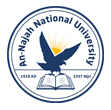Risk Factors Associated with Caesarean Sections Compared with Normal Vaginal Deliveries in Palestine
Abstract
According to the World Health Organization (WHO) and the Ministry of Health report in Palestine, the usage and incidence of cesarean sections (CS) delivery method is a global and local issue that has increased recently. WHO has pointed out that any region has no justifica-tion for having a rate higher than the recommended rate. In order to decrease this rate, the current study aimed to assess the common non-obstetric and obstetric risk factors of CS among Palestinian women. A descriptive cross-sectional study was conducted using a stand-ardized questionnaire to determine the independent risk factors related to CS compared with standard vaginal delivery (NVD). A total of 300 participants (150 cases who had a CS and 150 who had (NVD) were selected from three hospitals in Palestine, and they were inter-viewed through face-to-face interviews. The following independent risk factors were found to have a significant association (P<0.05) with increased risk of CS: over-weight before and during pregnancy; having edema, anemia, bleeding, or high blood pressure during pregnancy; mal-presentation of the fetus; higher level of education; living in the village; history of ec-lampsia; previous CS; advanced gestational age; head circumference of a newborn, use of pregnancy fixatives products, and use of Intra-Uterine Device (IUD) contraceptive methods. However, the independent factors that might help patients avoid cesarean section were prac-ticing exercise before pregnancy, increasing the number of antenatal visits, and using safe medical herbs. This study provided new evidence of a positive relationship between using fixatives during pregnancy and an increased risk of CS; this result has not been studied in previous research papers. The study highlights the importance of increasing awareness about clinical and public health measures to prevent risk factors associated with increased risk of cesarean section. To decrease the risks, maintaining normal BMI, practicing sports, the im-portance of adequate antenatal visits, and preventing any complications during pregnancy.
Digital Object Identifier (DOI)
10.59049/2790-0231.1091
Recommended Citation
Alshawish, Eman and Zaidan, Lina
(2021)
"Risk Factors Associated with Caesarean Sections Compared with Normal Vaginal Deliveries in Palestine,"
Palestinian Medical and Pharmaceutical Journal: Vol. 7
:
Iss.
2
, Article 10.
Available at: https://doi.org/10.59049/2790-0231.1091


